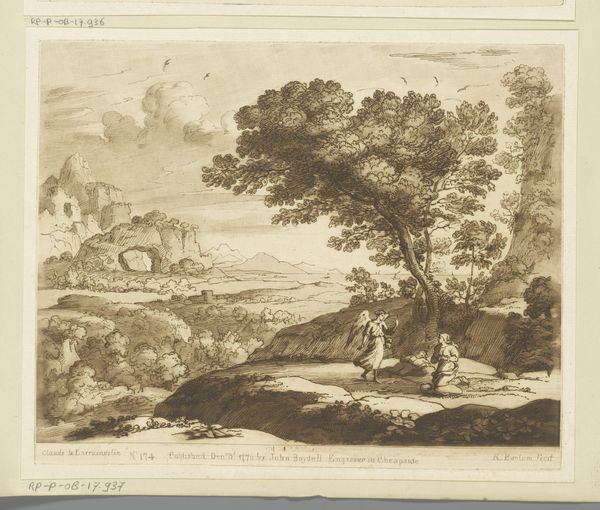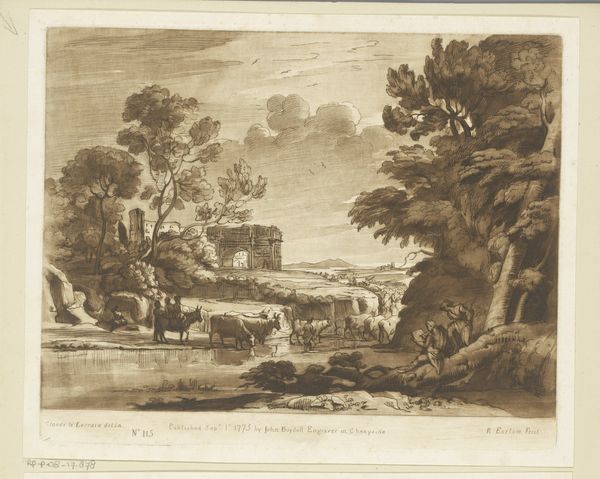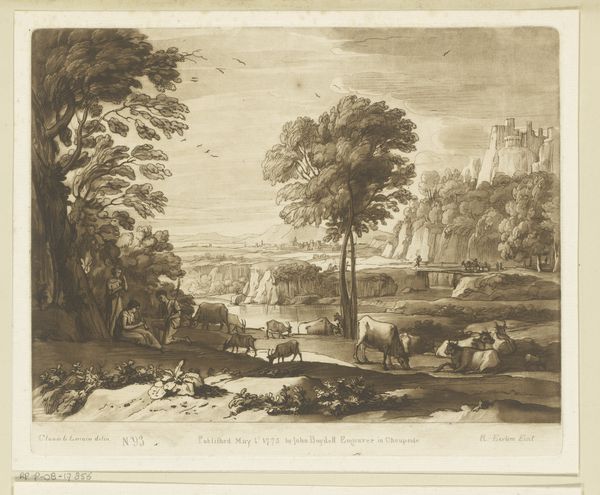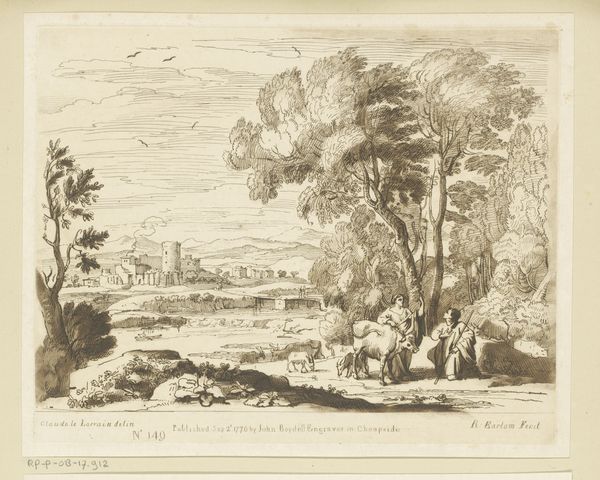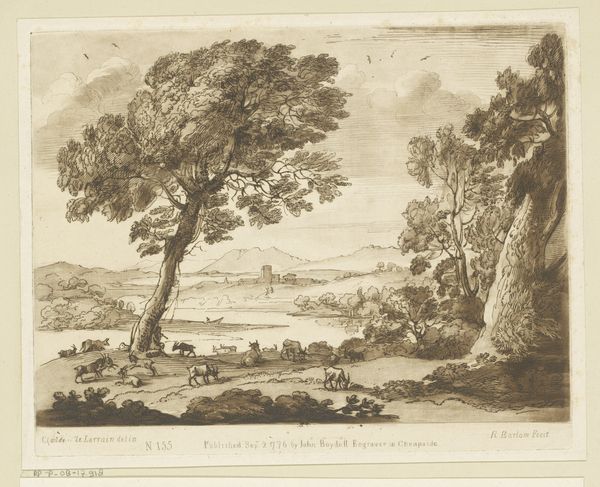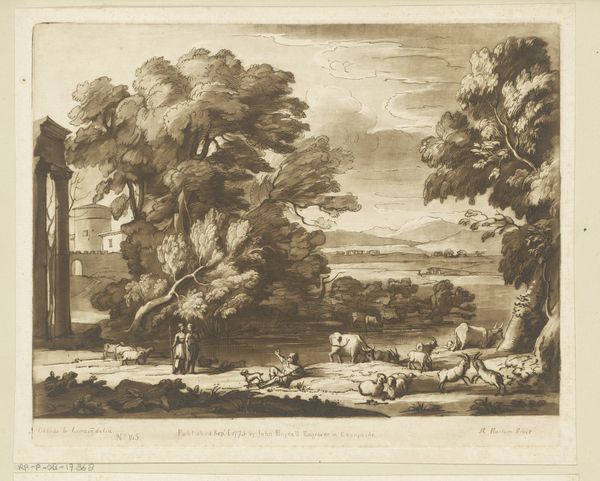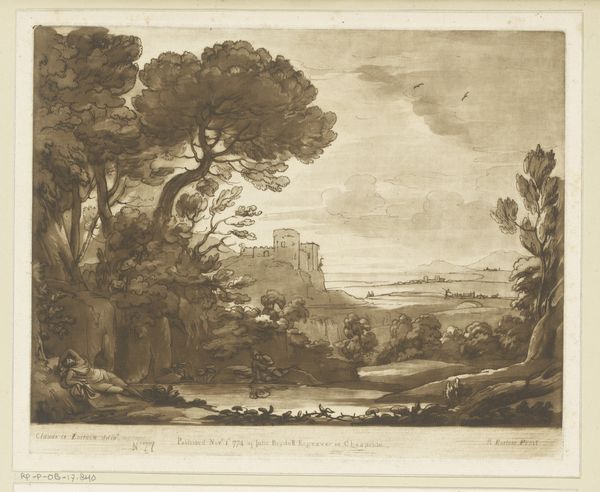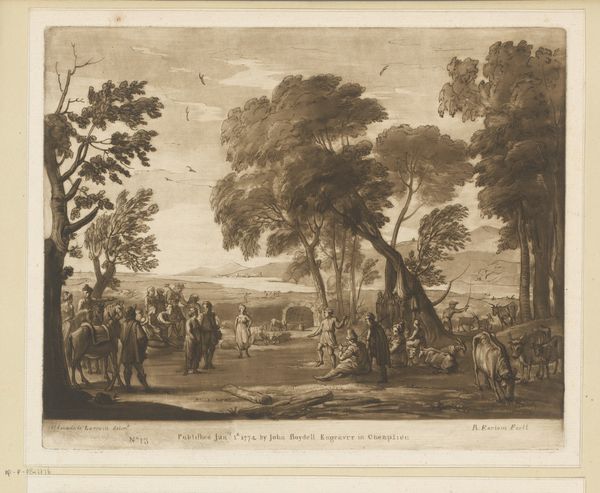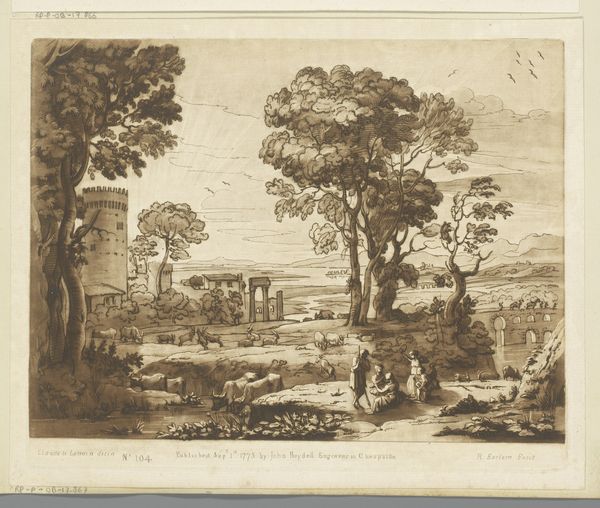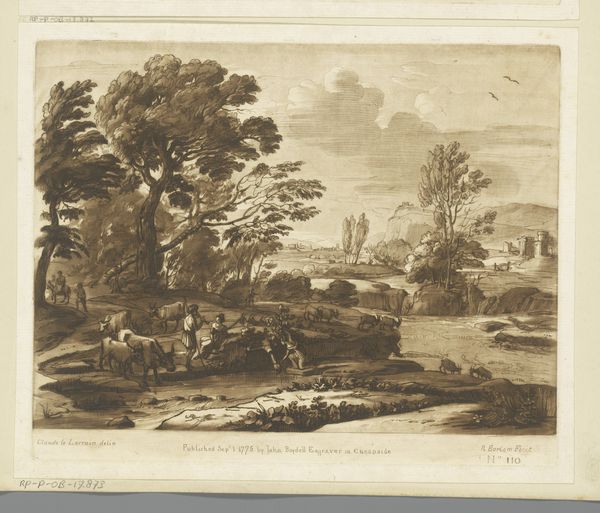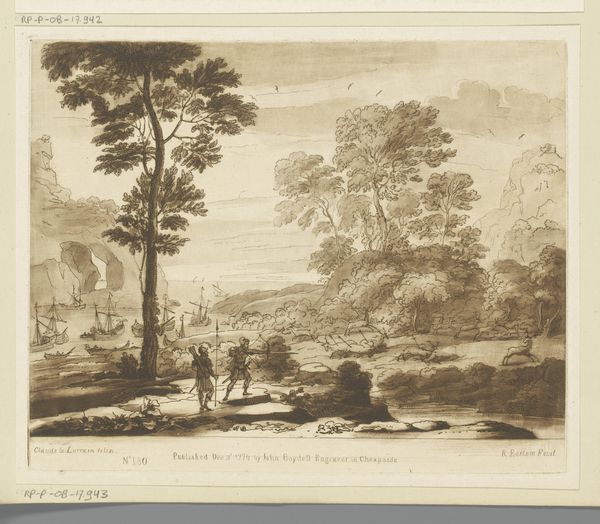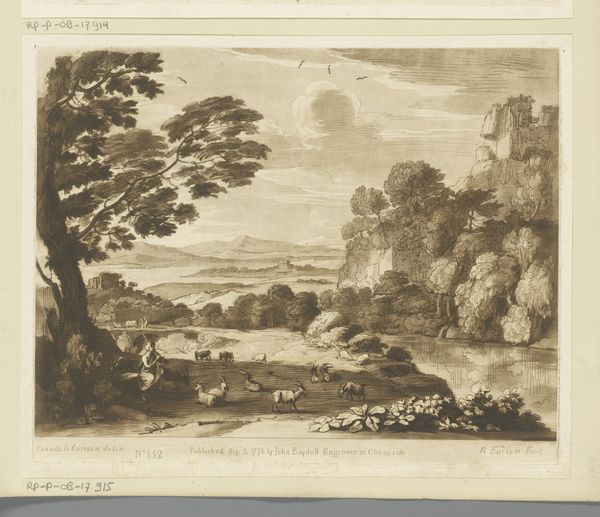
Dimensions: height 209 mm, width 258 mm
Copyright: Rijks Museum: Open Domain
Richard Earlom made this print, Landschap met Paris en Oenone, in 1775 using a method called etching. Etching allowed Earlom to achieve fine lines and tonal variations, which were essential for reproducing the painterly qualities of the original artwork. The print's appearance is influenced by the etching process, in which Earlom would have covered a metal plate with a waxy, acid-resistant coating, drawn the design through the wax, and then immersed the plate in acid. The acid would bite into the exposed lines, creating grooves that hold ink. The plate would then be inked, the surface wiped clean, and the image transferred to paper under high pressure. The visual effect is a soft, almost dreamlike scene, typical of pastoral landscapes. Earlom was not just an artist but a skilled artisan. His technical expertise allowed him to translate the aesthetic of painting into the accessible medium of print, and disseminate images to a broader audience. By focusing on the craft of etching, we appreciate how Earlom expanded the reach and influence of landscape art in the 18th century.
Comments
No comments
Be the first to comment and join the conversation on the ultimate creative platform.
